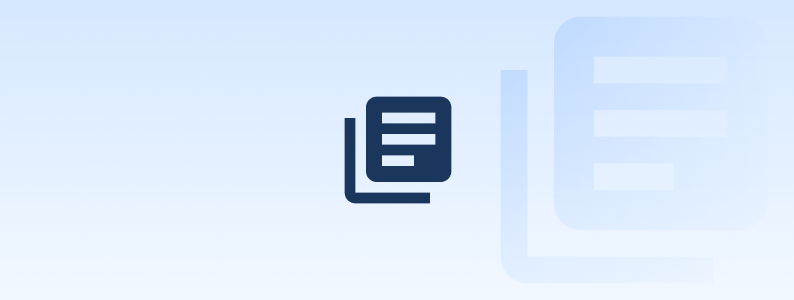
The Forrester Wave™: Autonomous Testing Platforms
As part of its market research, Forrester evaluated 15 autonomous...
A group CIO at Zurich shares a first-hand account of how prioritizing QA gives the company a competitive advantage.
This blog is part of a series featuring IT leaders who have driven successful quality transformations across organizations such as AGL, AXA, Equifax, and McDonald’s. These first-hand accounts are excerpted from the Tricentis-sponsored Capgemini report, Reimagine the future of quality assurance.
Travel insurance company Cover-More has been protecting Australians traveling domestically and internationally for 30 years. It provides travel and rental car excess insurance to 18 million travelers worldwide. While it has strong relationships around the world to provide global support for its policyholders, Cover-More’s emergency assistance operations are based in Australia.
While historically, Cover-More has operated under different brands and different companies globally, the new strategy will see us come together as one brand and one organization. The challenge we face over the next 18 months to three years is bringing those organizations together, both from a business perspective and from a technology perspective.
Our travelers, clients, and partners have growing expectations around the ease of access and engagement using digital technology, and we have to meet all of those needs.
For the Quality Assurance (QA) team that means being at the forefront of the organizational and customer changes, and at the forefront of our delivery practices. The team needs to be engaged earlier to design smarter, more effective and efficient ways of building quality into our delivery practices – and ensure we can move at the right speed.
We need to move faster with confidence, and that means leveraging continuous testing and deployment practices at the same time as meeting the quality and security requirements. This will involve automated releases, along with test-driven development and automated testing to ensure confidence is maintained.
Historically, testing has been either quite manual or it involved a huge suite of automated tests that took a lot of effort to build and maintain, but which didn’t always support the value chain of the business. In future, we need to focus on building only the right automated testing required to instill confidence and surety into our practices. This needs to be a mix of test driven development (TDD) undertaken by our developers but supported by the QA team, automated performance and functional testing to maintain our minimum standards and create surety. And it all needs to be paired with continuous testing running across our development branches.
The QA team need to be engaged earlier in our technology roadmap and delivery processes to ensure we can meet the demands required. All of this means we need to evolve the role of our QA team members.
There will be a huge transformation in the QA space in the near- to mid-future and all of it will be driven through customer experience. With the advent of the Internet of Things (IoT) and with more automation around the sphere of customer experience, the need to assure the quality of delivery would be minimal. This is a step above where we are today. It will be driven by the business need to be seen as a differentiated partner in the travel assistance and insurance space.
The QA teams are increasingly becoming part of the business and digital space rather than just purely IT. In this digital era, the focus is naturally more on automation and mobile testing.
Co-creation will involve developers and QA teams sitting together without any segmentation. This team, will, in fact, drive most of the “exceptional customer experiences” and include those as deliverables in the future software development life cycles (SDLC).
The need to be responsive to the market and our clients and partners requires us to move at speed in our digital and policy systems. The need for shorter cycle times demands we automate our ability to confirm the quality of our digital builds and client-facing solutions. Without automating our approach to building quality, we would not be able to move at the pace the world and our industry requires.
The digital era has redefined the way we expect to view and use QA services within the organization. A few of the key KPIs with this changing environment would include:
QA practices also play a key role in helping safeguard our information assets within the organization. We have a comprehensive process set up to approach application as well as security testing. For example, based on the client applications, we make sure the applications under testing have the means to protect sensitive personal data against unauthorized access. Such accesses across the application landscape are reviewed periodically as well as monitored proactively. Also, QA teams are involved in infrastructure security testing with respect to performance and functionality as part of the change management process. The QA team, systems analysts and developers work closely together to help the systems analysts gather requirements and build a robust security design within the application.
When it comes to partners we look for three things.
While we need to have a belief in the capabilities of the service provider, we expect them to provide upskilling based on their expertise and tools experience. The same level of trust is required when it comes to understanding our business needs and our aspirations to become the market leader in the travel assistance and insurance industry.
***
For additional insights from quality leaders, read the complete 100+ page Capgemini report, Reimagine the future of quality assurance.


As part of its market research, Forrester evaluated 15 autonomous...

Scale testing, ensure compliance, and modernize legacy systems with...

Gain unprecedented visibility into your agentic AI toolset with...

Watch our webinar to find out how Tricentis Tosca and Data...

Learn the key elements of a data integrity strategy that can help...

Experts explore why friction persists in even the most advanced...